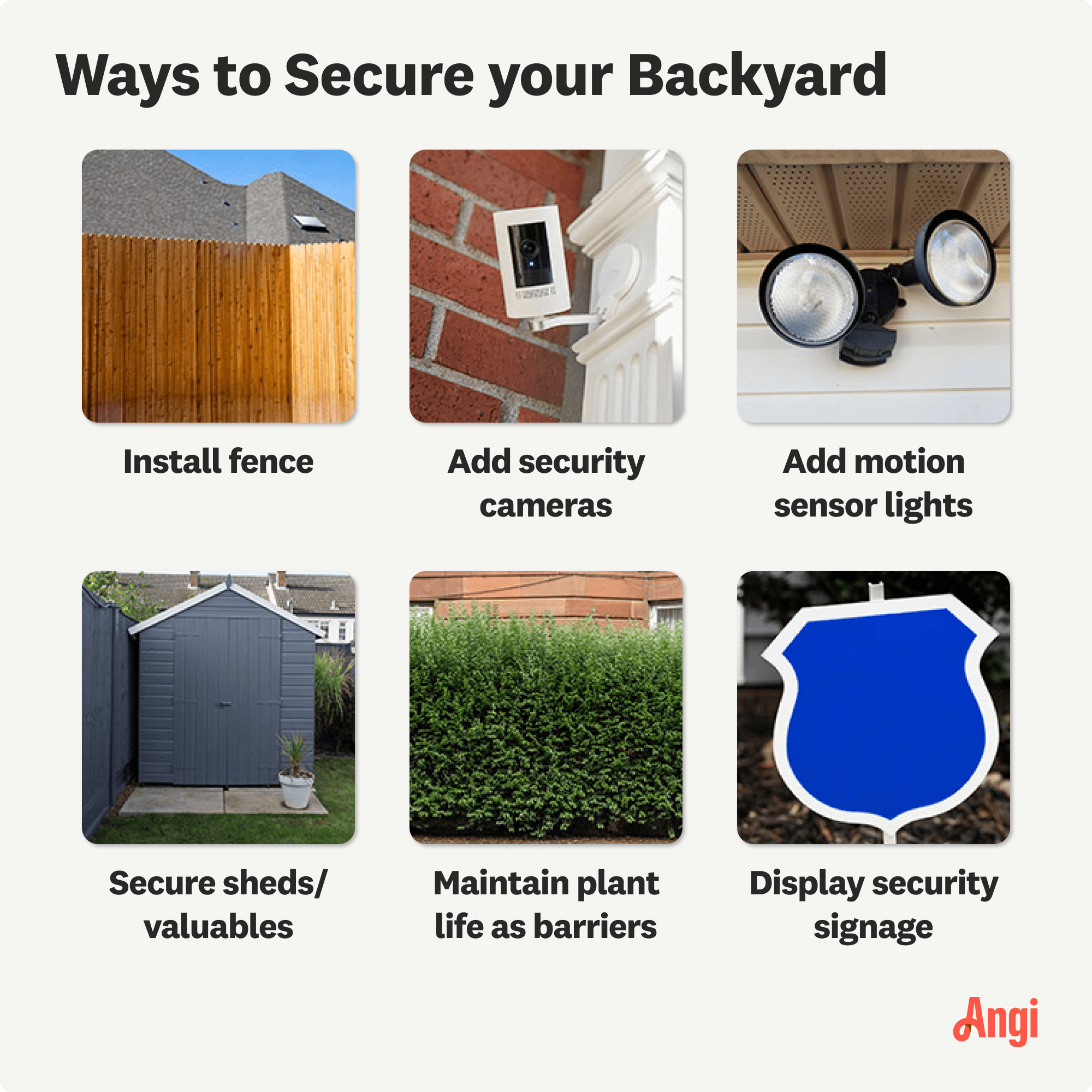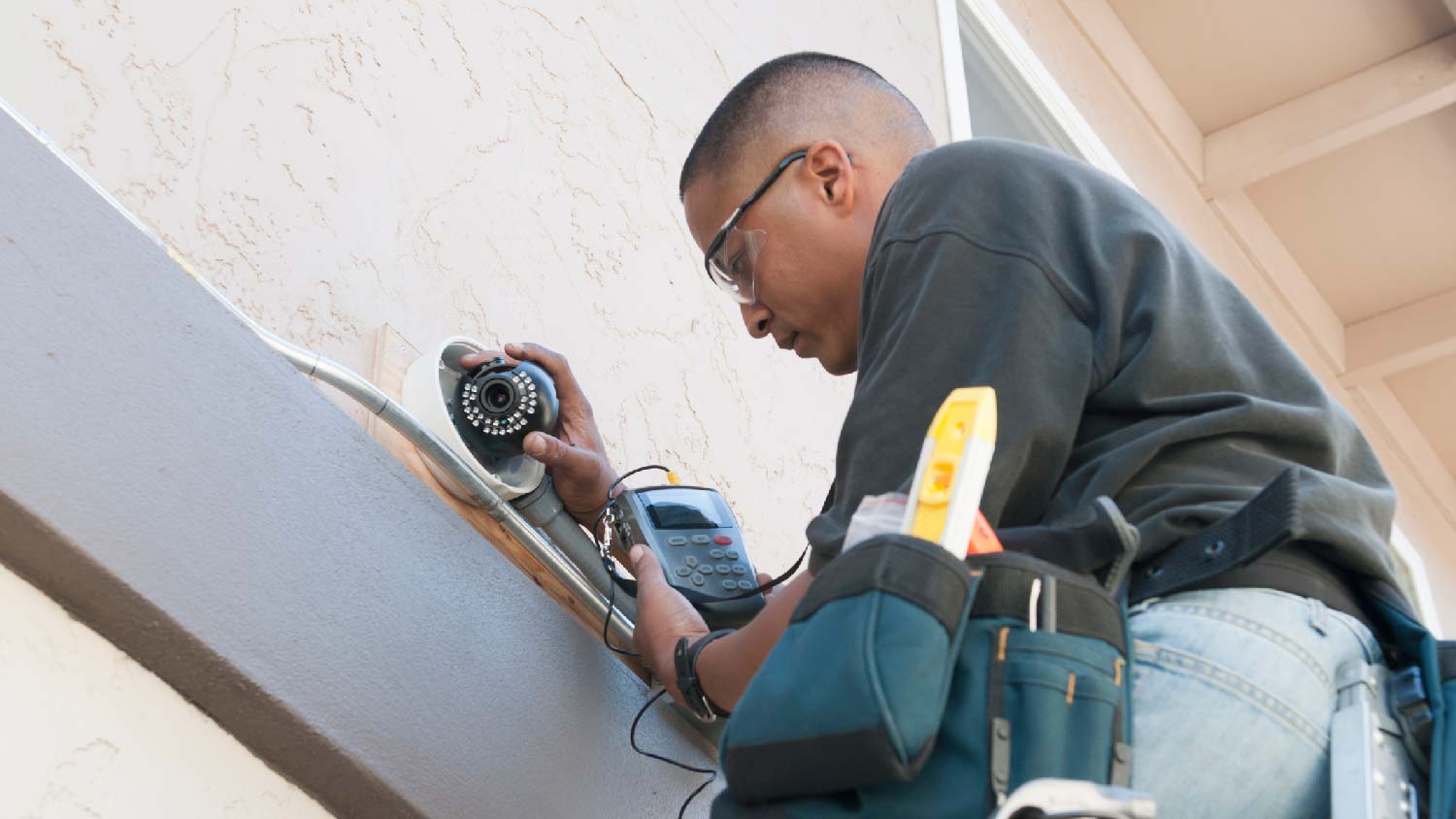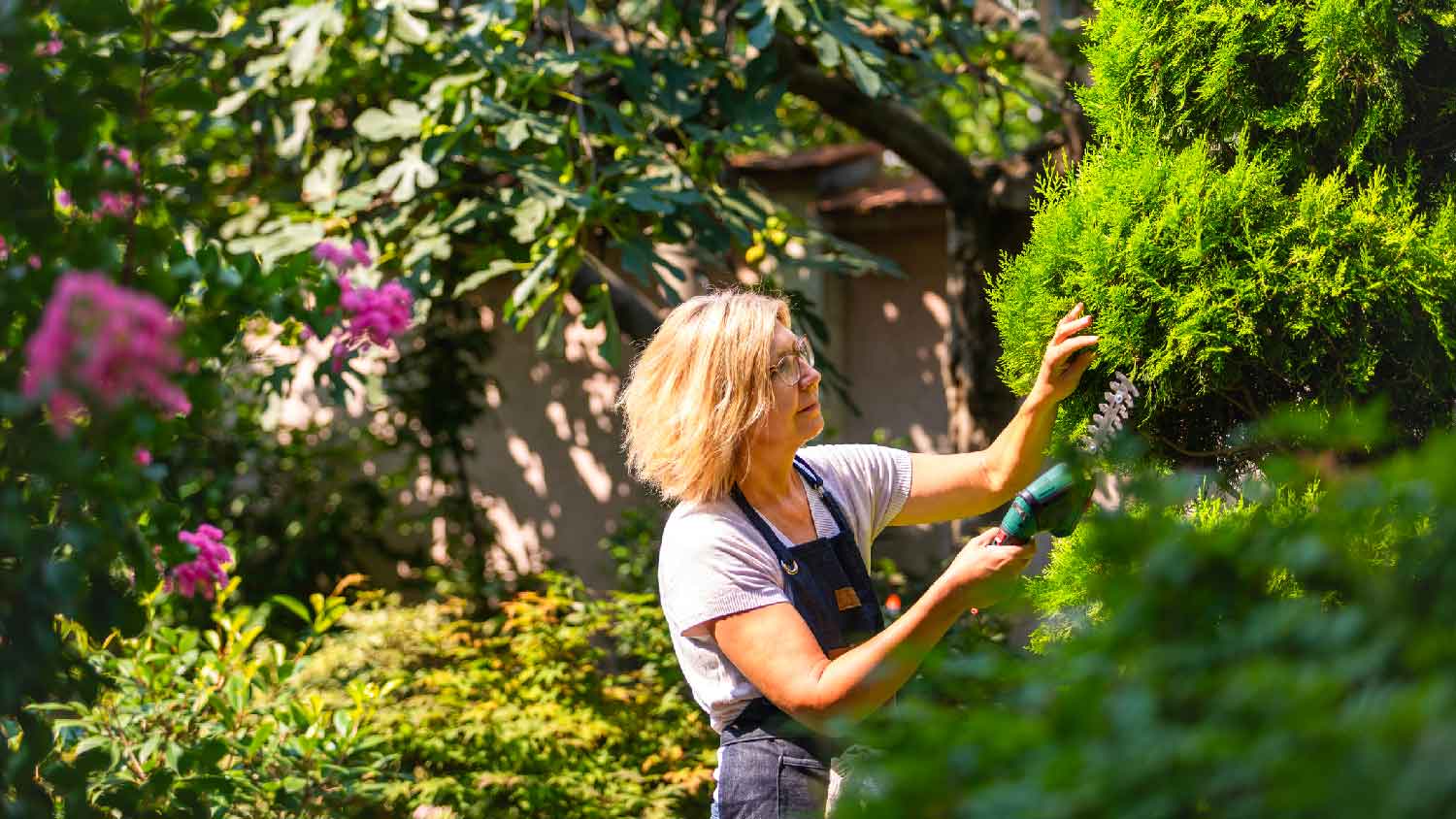
How much does it cost to install a doorbell camera? It depends on whether you plan to DIY or hire a pro. Learn about different models and their power sources, too.
Don’t let safety take a backseat in your backyard


When it comes to your home, protecting your backyard is like putting a sturdy fence around your family’s happiness and safety—it’s essential. It’s not just a space for summer barbecues and lazy Sunday afternoons. It’s a haven where you should feel safe and at ease. Instead of letting your home become a tempting target for unwanted visitors, let’s dive into these eight tips to help you protect your backyard and keep your family safe.

Installing a fence is a smart move for any homeowner looking to amp up backyard security. It’s not just about aesthetics. A solid fence can be your first line of defense against uninvited visitors. Think of it as setting up a strong barrier for your home—both physically and psychologically.
When you’re choosing a fence, aim for a height of at least six feet to keep curious eyes and potential intruders at bay. Wood and vinyl fences are popular for their sturdiness and visual appeal while a chain link fence is budget-friendly, though it doesn’t offer much privacy. You should also invest in quality locks—think deadbolts or slide bolts—for that extra layer of security. A fence’s gate is often the weakest point, so reinforce it well.
Before you build, check local zoning laws because you may need a permit to start building a fence. Additionally, look into any homeowners association (HOA) rules. These rules, and any local laws, can dictate how tall your fence can be, what materials you can use, and where you can place it. This will also help you avoid any fines or the hassle of having to tear it down later.

You can’t always be watching your backyard, but with home security cameras, it’s like having a pair of watchful eyes on your property 24/7. While even one camera can enhance your backyard security, setting up multiple cameras in strategic places is the way to go for peace-of-mind coverage.
Start by placing cameras at all entrances to your backyard—gates, doors, and any other potential access points. If you have a garage or shed, install a security camera facing these areas, especially if they have valuable tools and equipment that you want to keep an eye on. And a camera overlooking your deck or patio can help you watch who’s in your space.
Choose a system that lets you access your cameras remotely through a smartphone or tablet. This way, you can keep an eye on things even when you’re not home.
While you might already have some outdoor lighting—like cozy landscape lights for entertaining—they often fall short in the security department. Sure, they create a nice ambiance, but they don’t provide the bright visibility needed to discourage a potential burglar.
Motion-sensor lights activate whenever they detect movement within their designated zones. By overlapping multiple lights throughout your yard, you can eliminate any dark and secluded corners where someone might try to hide.
Just like with video cameras, install motion-sensor lights near all entry points to your backyard. And when choosing the best light, look for those with adjustable sensitivity. This way, you can fine-tune how much movement they detect, reducing false alarms from pets or passing cars.
And don’t forget to check your lights regularly. Clean the sensors and bulbs, and replace any burned-out bulbs.
You might think it’s no big deal to showcase your shiny new grill, stylish outdoor furniture, or high-end tools, but hiding these items can boost your home’s backyard security. Remember, intruders are always on the lookout for easy targets, so make sure you don’t become one. If they can see valuable items on display, your home becomes a prime target.
If you own high-quality lawn equipment, bicycles, or tools, store them away in a locked garage or shed when you’re not using them. While outdoor furniture adds flair to your backyard, leaving expensive pieces out in the open will attract unwanted attention. Consider using storage covers or even bolting them down to keep them out of sight and secure.
Your garage and shed can be a treasure chest for thieves if they’re not properly secured. These areas often house valuable tools, equipment, and even cars, making them prime targets for break-ins. This is especially true for garages that aren’t directly attached to your house. And if you don’t want your belongings ending up at a pawn shop, you need to secure your garages and sheds with a lock.
Invest in high-quality deadbolts for garages and sturdy padlocks for shed doors. Opt for pick-resistant options to deter any particularly “handy” burglars. Reinforce your windows, especially if they’re not made of shatter-resistant glass. Window bars or security film can make it harder for intruders to gain access. Remember, most break-ins happen through easily accessible points, so go through all entry points in your outdoor dwellings to make them harder to get through.

It may not seem like it, but a well-maintained yard can help keep out potential intruders. First things first—keep your shrubs and trees trimmed. Tall shrubs and overgrown trees can create hiding spots for intruders, making it easier for them to approach your home without being seen. Clear lines of sight are great at preventing crime. Regularly pruning your plants, especially those near windows and entry points, can help keep your space visible and less appealing to would-be burglars.
Consider planting thorny bushes, like roses or holly, along fences and under windows. These natural barriers can discourage anyone from attempting to get onto your property. Just a bit of prickly foliage can add an extra layer of backyard security without looking uninviting.
Can security signs deter crime? Just the sight of a security sign can make a would-be burglar think twice. While a sign alone isn’t a foolproof security measure, strategically placing security signs and stickers in visible areas can send a clear message to unwanted visitors—that your property isn’t the one to burglarize.
Place security signs in multiple locations around your yard—especially at entry points. Don’t just stick one sign near the front door. A well-placed sign on your garage or along your backyard perimeter can reinforce that your home isn’t an easy target.
The best way to protect your backyard is to install a home security system while also incorporating as many of the above tips as you can. In fact, a study by Alarms.org found that homes without security systems are up to 300% more likely to be burglarized. A well-installed security system can monitor your backyard, alert you to any suspicious activity, and even notify authorities if something goes wrong.
After making the decision to install a home security system, you may be wondering whether to tackle this as a DIY project or leave it up to the pros. DIY systems are usually more budget-friendly since you can save on installation fees. You have the flexibility to choose features that fit your specific needs—think cameras, motion sensors, alarms, and more. With a DIY system, you’re in charge of the setup and maintenance, giving you complete control without waiting for a technician.
If you prefer a more hands-off approach with the added touch of an expert, hire a professional home security company to set up your system. The upfront cost can be a deterrent for some homeowners. On average, the cost for a home security system installation ranges between $301 and $1,234. Keep in mind that you’re not just paying for the knowledge and expertise of a professional and their high-quality equipment. You’re investing in the reliable service, advanced features, and ongoing support of a professional system—and the peace of mind that comes with it.
From average costs to expert advice, get all the answers you need to get your job done.

How much does it cost to install a doorbell camera? It depends on whether you plan to DIY or hire a pro. Learn about different models and their power sources, too.

Feeling safe at home should always be a priority, and installing a new security system can help you do just that—no matter where you live.

Discover wall safe installation cost details. Learn about average prices, key cost factors, and tips to save on your wall safe project.

Thinking about upgrading your home security? Learn how a security system can make you feel safe and lower your home insurance rates.

There are many different avenues for how to secure windows. Depending on your home’s layout and vulnerabilities, one or more of these six tips may help.

Alarm systems can be useful for home security depending on the type. If you’re wondering do alarm systems deter burglars, keep reading to find out.